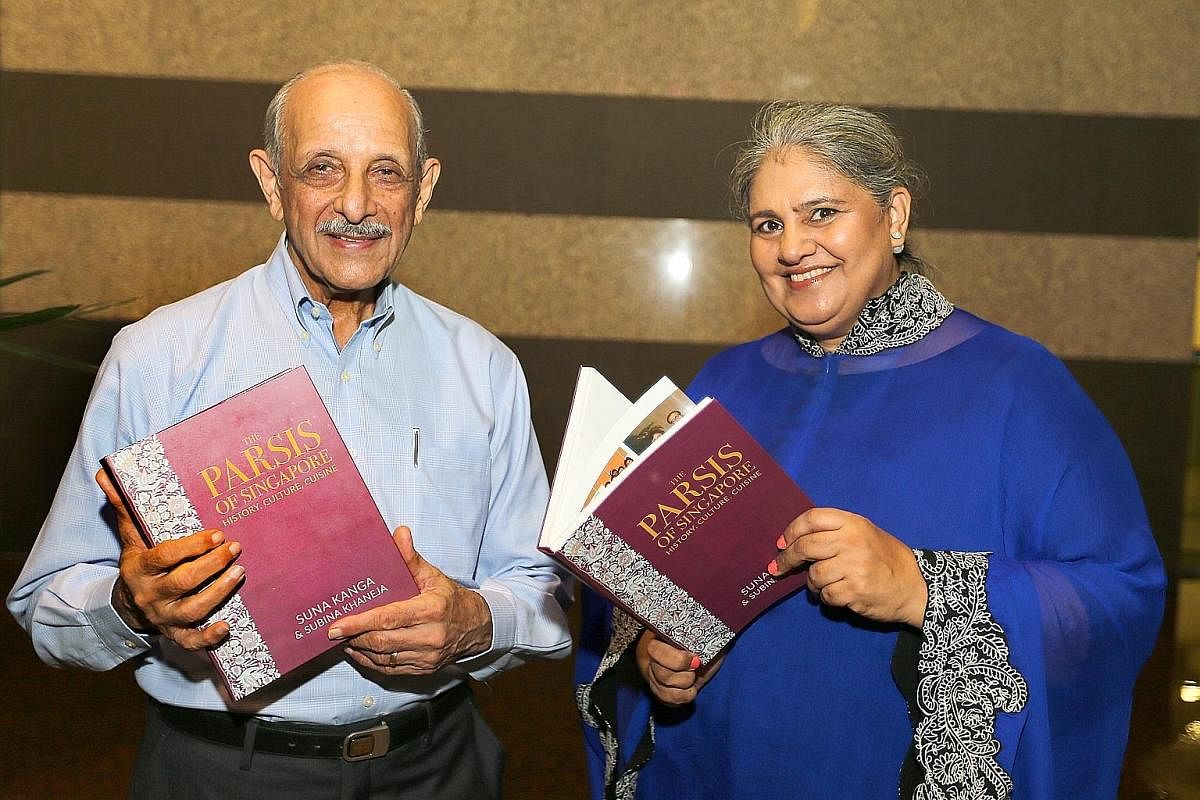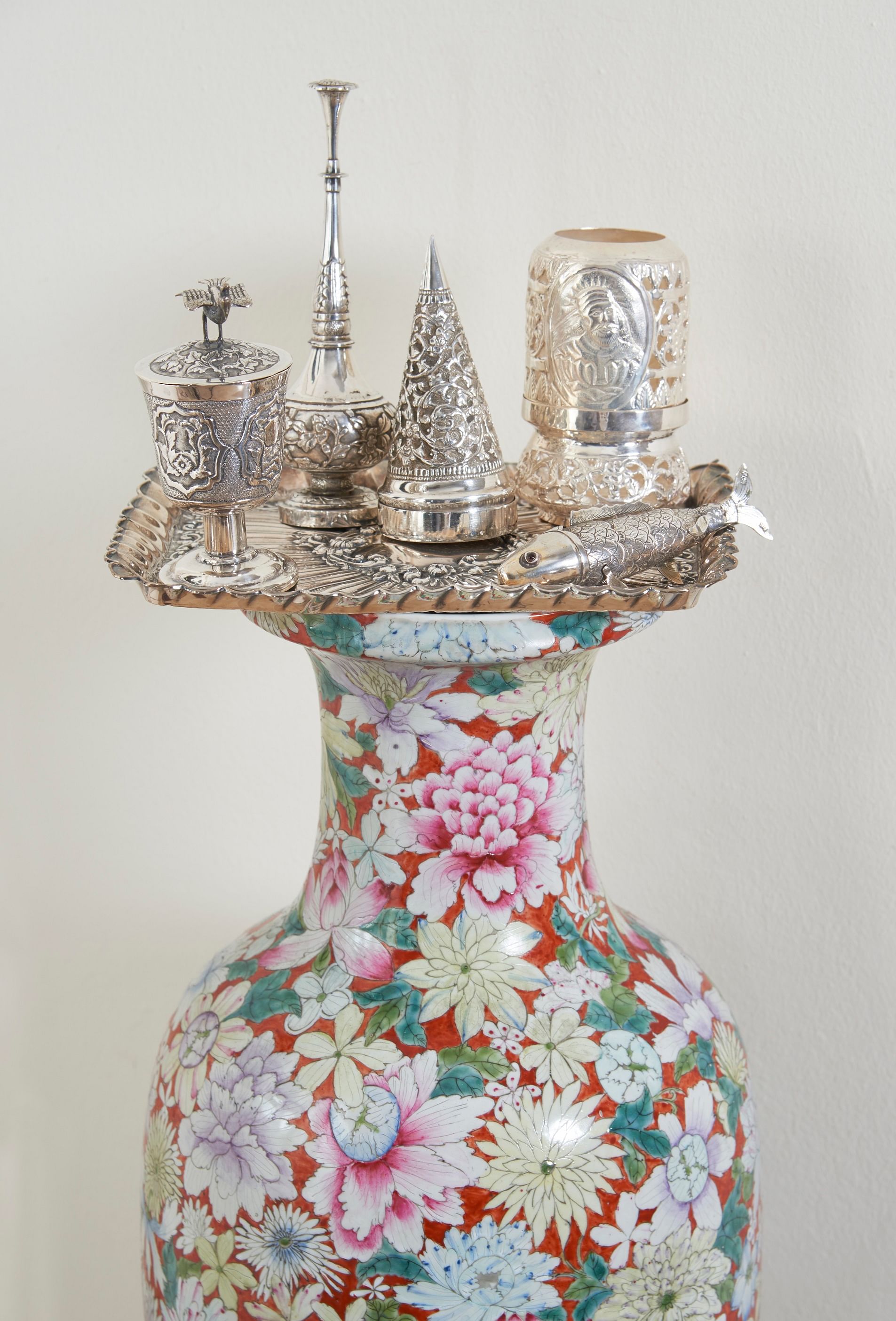Book on Parsi heritage gets second shot at life
Mrs Suna Kanga, a Parsi, set out to write a book about her heritage, but died before completing it, so freelance writer Subina Aurora Khaneja finished it on her behalf

When the late Mrs Suna Kanga told people that she was Parsi, a follower of the Zoroastrian faith, she was often met with blank stares.
Although the Parsi community has grown, it still remains small in relation to The Republic's population of 5.6 million. When Mrs Suna moved from Mumbai to Singapore in 1974 with her husband, Singapore Airlines pilot Rustom Kanga, there were 40 Parsi people. Now there are about 350.
The Parsis are descendants of Persian Zoroastrians who fled from present-day Iran after the Persian Empire was conquered by Arab Muslims in the eighth century. Many of them settled in western India.
Being very much part of the close-knit community in Singapore was why, in 2014, Mrs Kanga, a journalist, started tinkering with the idea of writing a book about what it meant to be a Parsi in Singapore.
Mr Kanga, 79, says: "Suna wanted it to be about everything from the religion to the culture and heritage. It was her way of celebrating the community that she so prized."

Mrs Kanga, then aged 74, began by reaching out to the community for photos and recipes, interviewing families and collecting materials on their history.
She also applied for a grant from the National Heritage Board, which she received.
But few at the time knew that Mrs Kanga was also seriously ill with only a few months to live. Her family declined to reveal the nature of her illness.
The spirited woman soldiered on nonetheless. Mr Kanga says it was the desire to see her book published that kept her going in the last few months.
But she died on Feb 15 last year, having completed only three-quarters of the book. She was 76.
Picking up the pieces after the death of his wife of 52 years, Mr Kanga - with the support of his daughter, Nazneen, 53, and son, Cyrus, 51 - felt he had to get the book published in her memory.
Serendipitously, a mutual friend introduced him to Mrs Subina Aurora Khaneja, a freelance writer and owner of local writing and art studio The Right Side.
Despite not being a Parsi, the Punjabi Singaporean, 54, says she was taken by the premise of the book and Mr Kanga's desire to see it published.
She says it helped in many ways to be an outsider looking in.
"I'm not a Parsi but in some ways, that gave me a unique vantage point to tell the story of this community," she says.

"My goal was to fulfil the vision of this book as set by Suna and to create a record of the Parsi community for themselves and for other communities to get to know the Parsis through their history, culture and cuisine."
For eleven months, she pulled 12- to 15-hour days, digging through the National Archives, cross-checking information through international publications and land records and holding monthly meetings with senior Parsi leaders to understand more about the community.
She also reached out to families to get recipes and pictures of textiles such as Gara saris and traditional furniture featured in the book.
Her efforts and meticulous research resulted in additional chapters, such as one on Wayang Parsi that details the influence of Parsi theatre on the Malaysian and Indonesian theatre scene.
Her resarch also unearthed Parsis who had been in Singapore since the 1800s and were part ofthe country's colonial history.
She spent months hunting down photographs of these early pioneers, such as pictures of the Cursetjee family, which were part of a private collection.
Mr Kanga guided her on nuances in spellings of Parsi words, connected her to his community and, during the editing stages of the book, read through the content and helped with sorting, assigning and purchasing of photographs.
The finished book, titled The Parsis Of Singapore, History, Culture, Cuisine, is published by Epigram Books and was launched last Wednesday at the Ministry of Communications and Information.
Says Mr Kanga: "This was a true labour of love and I'm so thankful for the voice this has given to the Parsis of Singapore. Suna would have loved this book."
• The Parsis Of Singapore, History, Culture, Cuisine is priced at $55.90 and is available at all major bookstores, through Epigram Books' website, shop.epigrambooks.sg and on theparsisofsingapore.wordpress.com
Join ST's Telegram channel and get the latest breaking news delivered to you.
A version of this article appeared in the print edition of The Sunday Times on April 23, 2017, with the headline Book on Parsi heritage gets second shot at life. Subscribe

